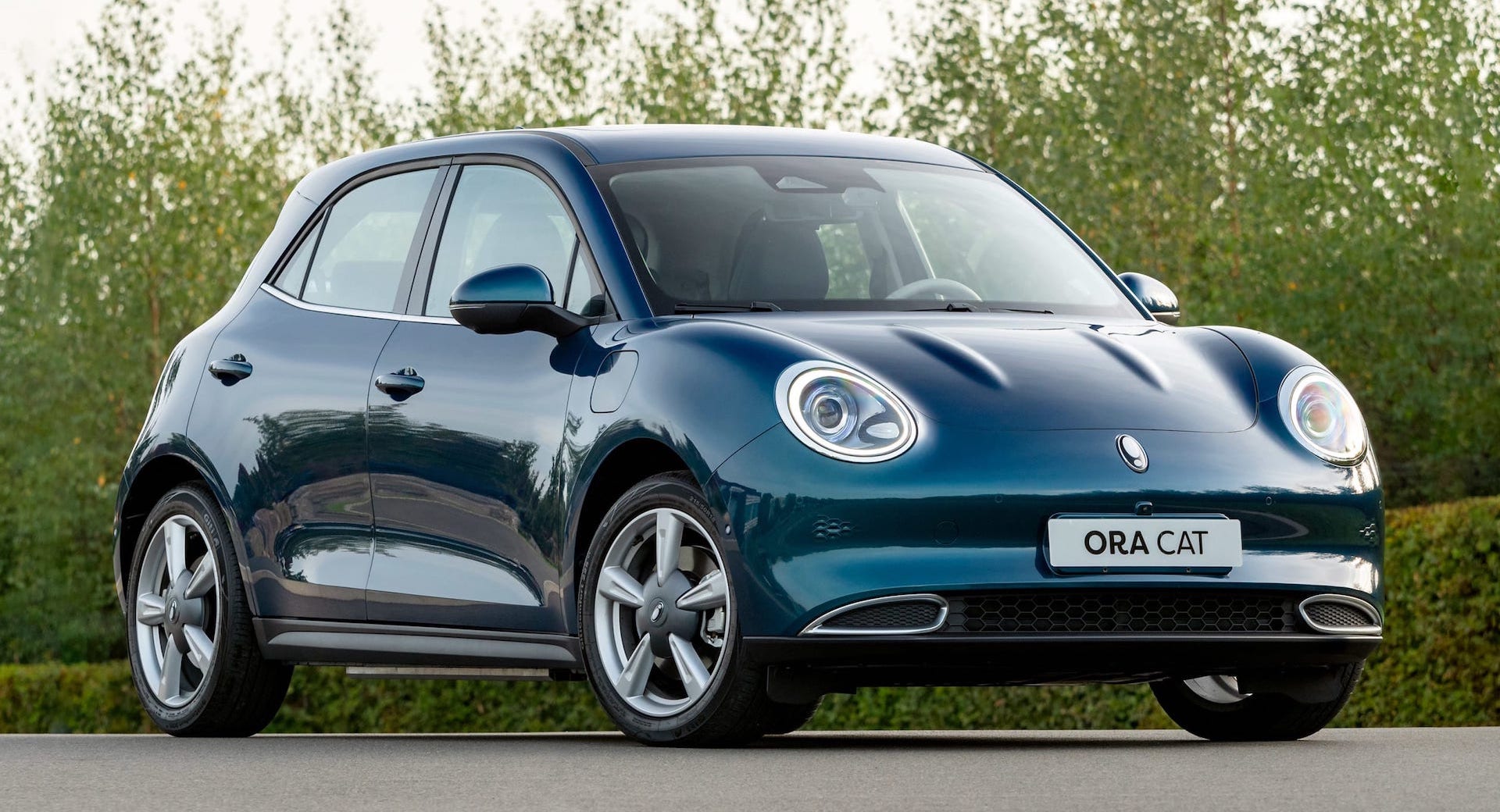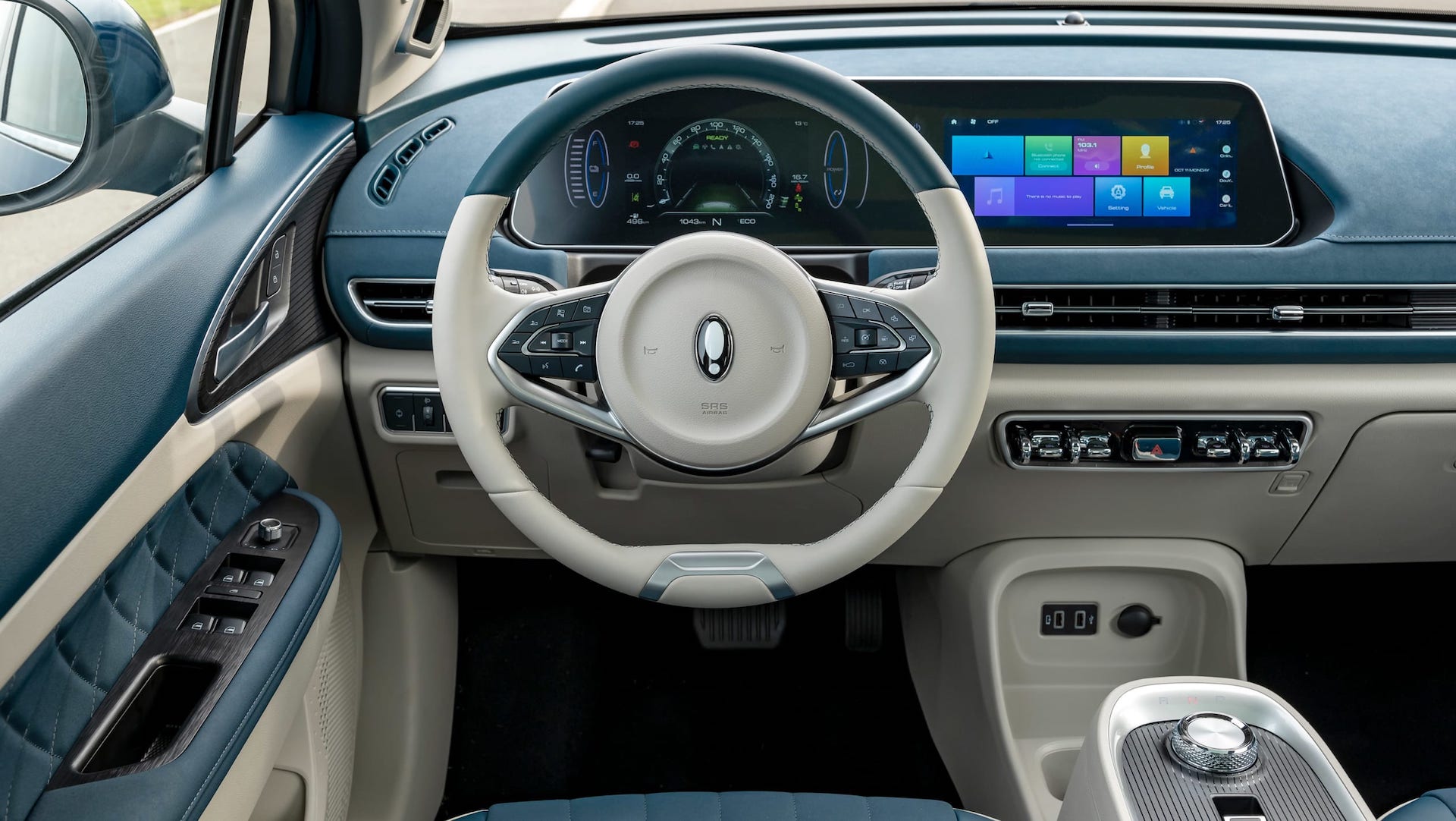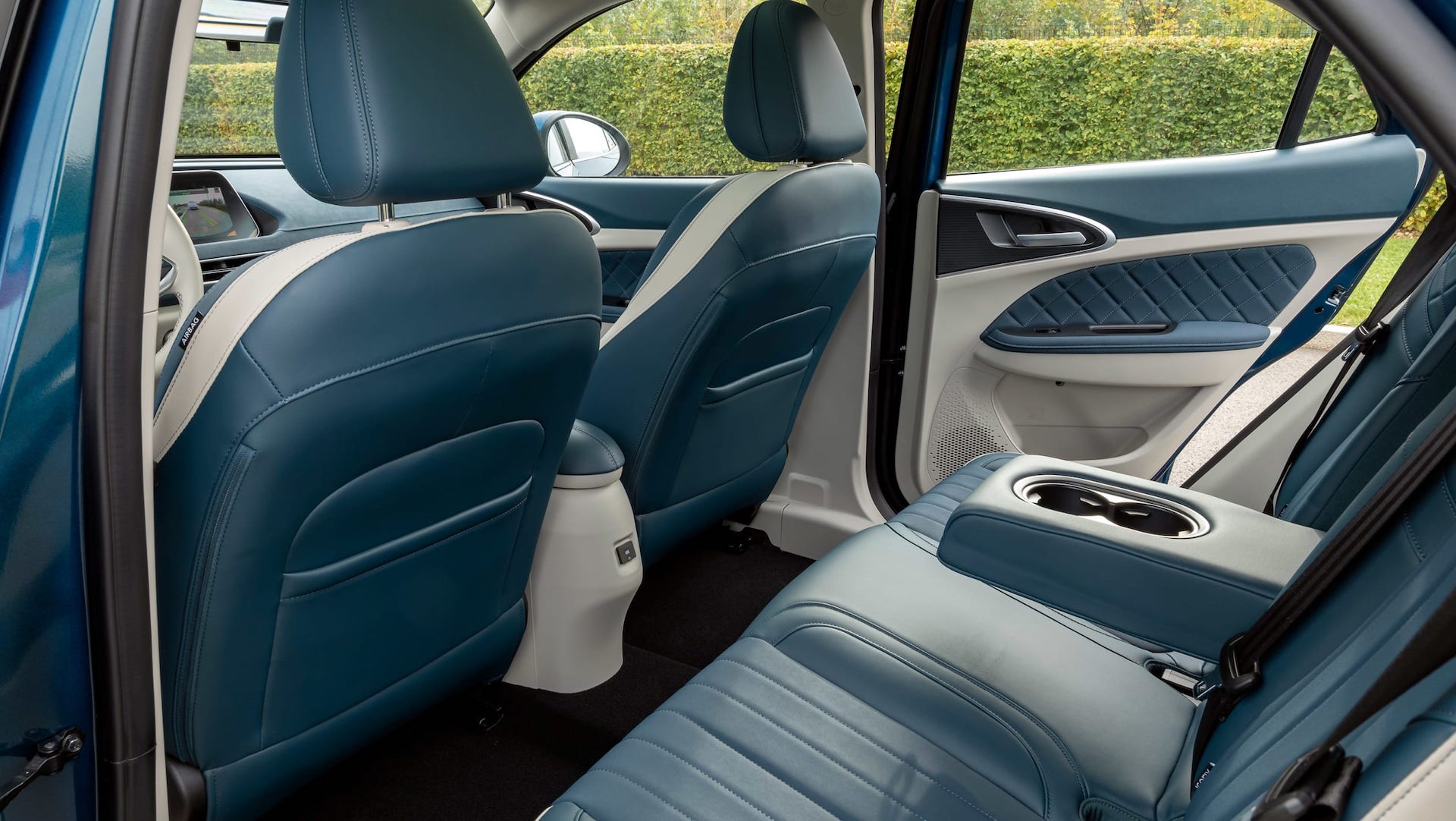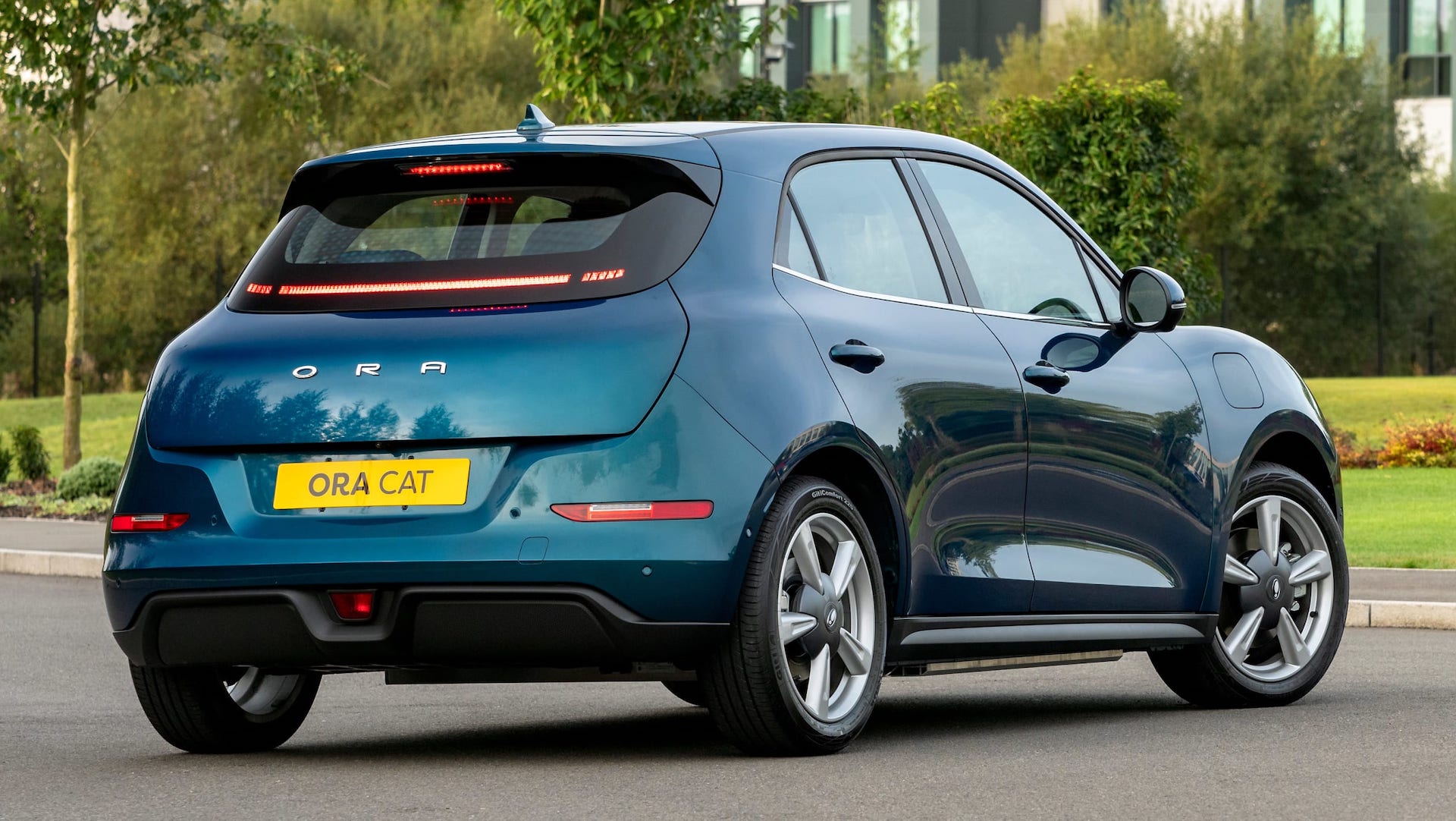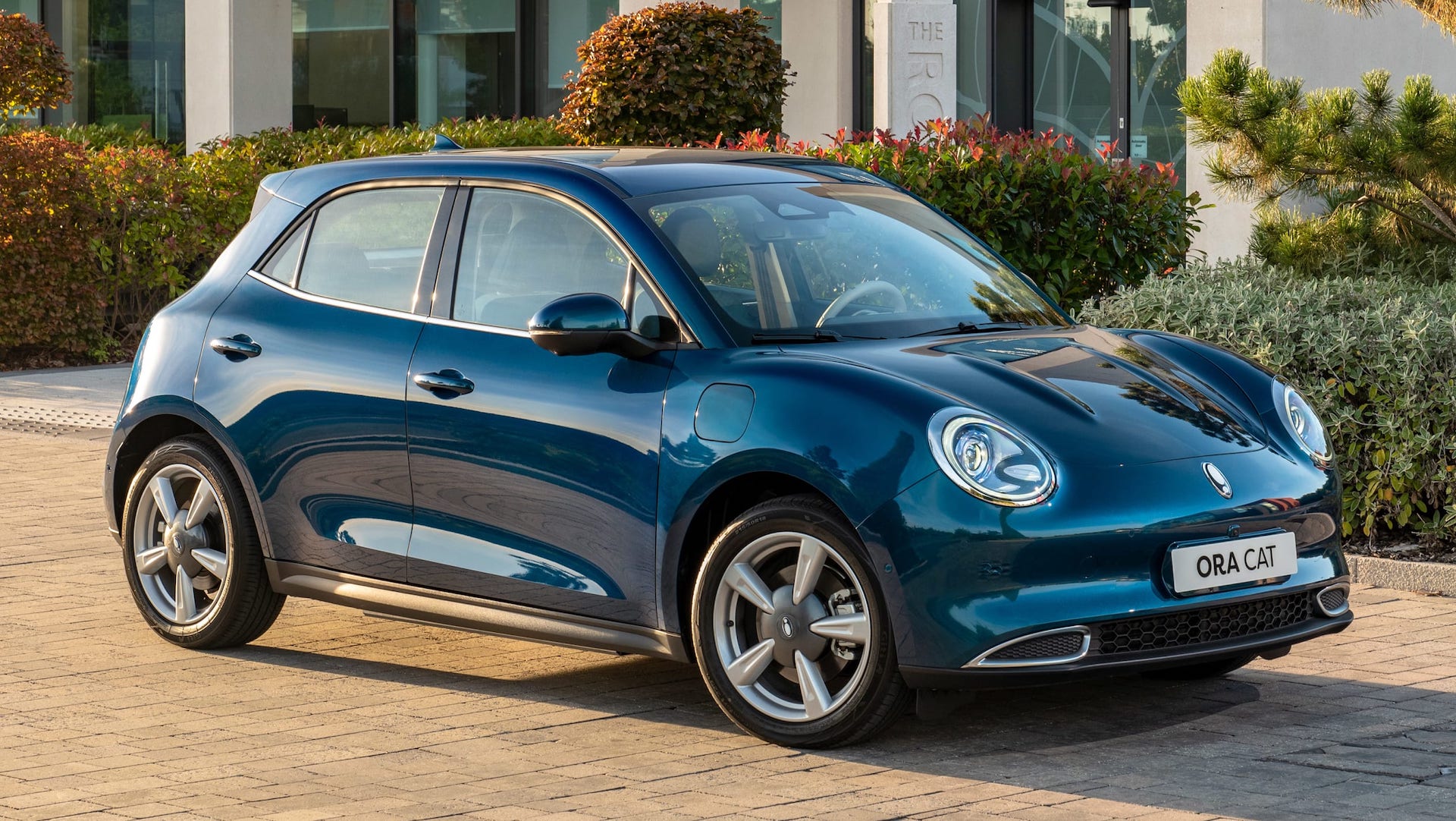The Ora Cat EV is a dangerous car. Not dangerous like Chinese cars were 15 years ago when they crumpled like paper bags in crash tests but a real danger to the established car industry hoping to hang in to its market share.
A cheeky looking vaguely retro five-door hatchback with up to 261 miles of electric range that costs significantly less than a VW ID.3, it has all the makings of a massive headache for European automakers like VW and Renault.
The Cat, from Great Wall’s Ora brand, was unveiled in European form at the Munich Motor Show in September, and goes on sale in the UK in December from £25,000 ($33,740) before the UK government’s £2,500 ($3,374) discount is applied, meaning it undercuts the cheapest ID.3 by almost £6,000 ($8,000), and the much smaller Renault Zoë by over £5k ($6,750).
For £25k you’ll get a 58 kWh battery with a 209-mile (336 km) range in the WLTP cycle, compared with 124 miles (200 km) for a Mazda MX-30, though the Zoë will do 245 miles (394 km). Stick another £3k on the budget however, and you get a bigger 63 kWh battery that bumps the range to the full 261 miles (420 km), and still crucifies the Renault on price.
Related: Great Wall’s ORA Lightning Cat Is An Electric Sedan That Looks Unashamedly Porsche
A single motor mounted in the nose of the Ora Cat sends 169 hp and 184 lb-ft to the front wheels to deliver a respectable 8.5-second zero to 62 mph (100 km/h) time, while the generous list of standard kit includes LED lights, 18-inch alloys (the stingy VW gets steelies) and a pair of 10.25-inch touchscreens. Buyers wanting a sportier look can opt for the GT trim, which gets different wheels and bumpers, though the underhood hardware doesn’t change.
Good Is Probably Good Enough
No one outside of China has yet driven the Ora Cat, so we’ve no idea how it stacks up dynamically against cars like the ID.3 on European or American roads. But one YouTuber who has driven it in China claims it’s no more than competent in the ride and handling stakes. Which is probably all it needs to be. For many buyers the price, connectivity and equipment will be enough to swing the deal. If we were Volkswagen, which is having huge success with the ID.3, but which has also had to stand back and watch Tesla storm to first place on the European sales charts with the Model 3, we’d be worried.
And not only because the Ora Cat looks like a tempting package, but because it’s only a harbinger of what’s to come, and soon. We’ve known that the Chinese were coming for some time. But as with electrification, the shift from “coming” to “here and ready to kick ass” seems to have changed rapidly. Mind you, the two are not unrelated. Chinese carmakers are pushing EV technology hard, and as they move into Europe and beyond, are able to take advantage of the public’s willingness to embrace new, unfamiliar brand names. Who, after all, had heard of Tesla 15 years ago?
Shades Of ’49 Beetle And ’72 Civic, And We Don’t Mean The Styling
Many people might already be driving a Chinese car and not even know it. MG, Polestar and Tesla all build cars in China that are then exported around the world, while Lynk & Co recently launched in Europe and is coming to the UK in 2022, with expansion to North America promised.
Yeah, don’t go thinking the U.S. is immune. Chinese car brands have had their eyes on the North America prize for a while. Polestar, obviously, is already there, and MG’s recent expansion into Mexico could be a stepping stone to the U.S. market. While many of the promised launches of Chinese cars in the U.S. made over the last decade from the likes of Chery and Zotye haven’t materialized, you’d be unwise to bet against Chinese brands making inroads in the future.
We’ve been here before on more than one occasion, and old money carmakers should know better than to ignore the threat. In the 1950s U.S. carmarkers were left scrambling to react to the influx of fuel efficient European imports like the VW Beetle. And in the late 1960s and early 1970s, Japanese brands did the same thing, both in the America in Europe, enticing buyers with more equipment and solid engineering, as did Korean brands two decades later.
Developing Identities
One area in which the Chinese seem to be performing better than the Koreans did back then is styling. Hyundai and Kia struggled for years to build cars with any visual personality, and arguably have only recently achieved that aim. But while the Ora Cat clearly tips a hat to car like the Porsche 911, it is at least distinctive and memorable, and the rear styling, which, unusually, features no traditional light clusters, the lights being integrated into the black strip below the rear window, helps it stands out from the crowd.
Related: Honda Introduces Five New EVs For China, First Two Arrive Next Year
It’s certainly more imaginative than some of the really shameless Chinese copies from the past, like the Landwind X7, which was a dead-ringer for the Range Rover Evoque, or the Chery QQ, which was such a close copy of the Daewoo Matiz that key components, including the doors, were interchangeable between the two cars. And despite those front lights it’s unlikely to raise the hackles of Volkswagen the way its overtly retro Beetle-clone sister, the Ora Punk Cat, has.
Watch, Learn And Improve
And it’s not only the styling of China’s cars that has improved, but also the quality of the components underneath. For years foreign brands wanting to trade in China were required to enter joint ventures with local companies. And now those same Chinese companies are employing the lessons learned in those projects and using the explosion in EVs as a way to fast track their way into the markets dominated by the carmakers who schooled them. According to this article in the NY Times, the cars are proving as popular with dealers as customers. The newspaper says the Chinese brands’ better management of the chip crisis means their customer waiting times can be shorter, and one German MG dealer said he liked the fact that he wasn’t required to buy the cars up front, instead earning a commission on each sale.
There are still some hurdles to cross, including the lingering public perception of Chinese-built goods as inferior (despite each of us running our lives via a mostly reliable Chinese-made smartphone), and the lack of a dealer network, although Tesla’s business model and an EV’s minimal requirement for servicing helps there. But the Ora Cat looks like a solid product, as do many of the other Chinese cars we’ve seen recently from the likes of Wey and Nio.
Back in the 1960s, the British motorcycle industry was hugely successful and dismissed the idea of Japanese brands like Honda, then known for their simple scooters, making full-on sports bikes as a joke. But within a decade the British bike industry had been decimated. Don’t bet against a significant proportion of the cars making up your average emissions-free traffic jam a decade from now wearing a badge that’s not even available in your country today.
